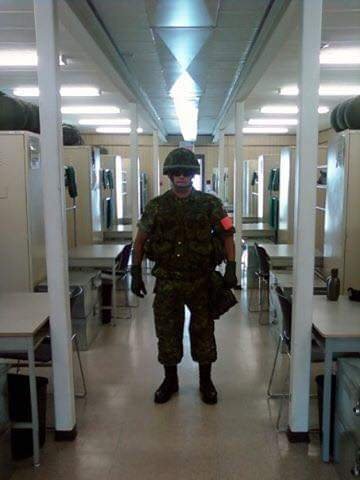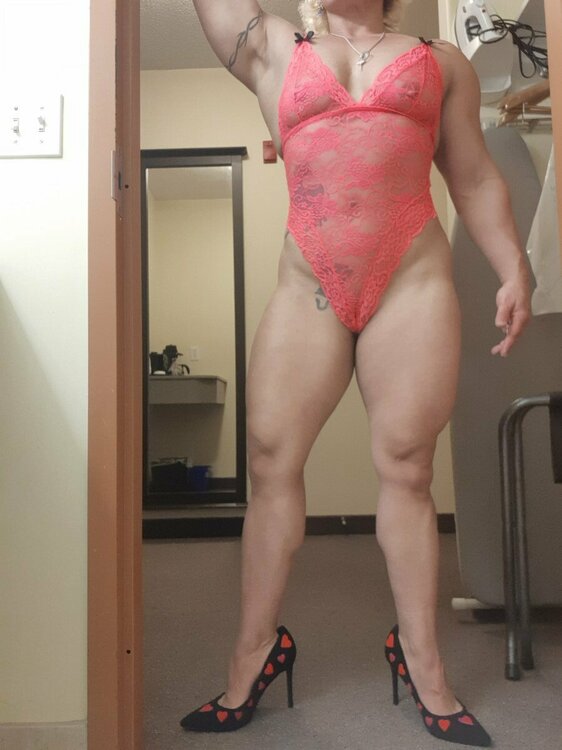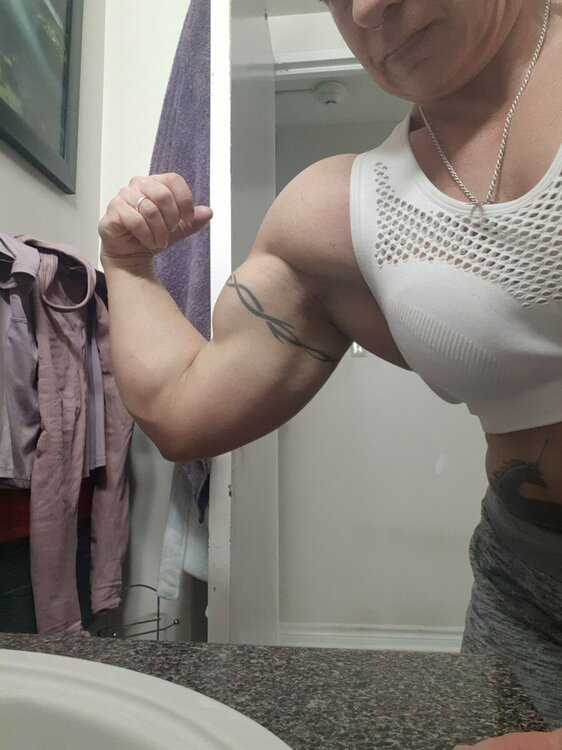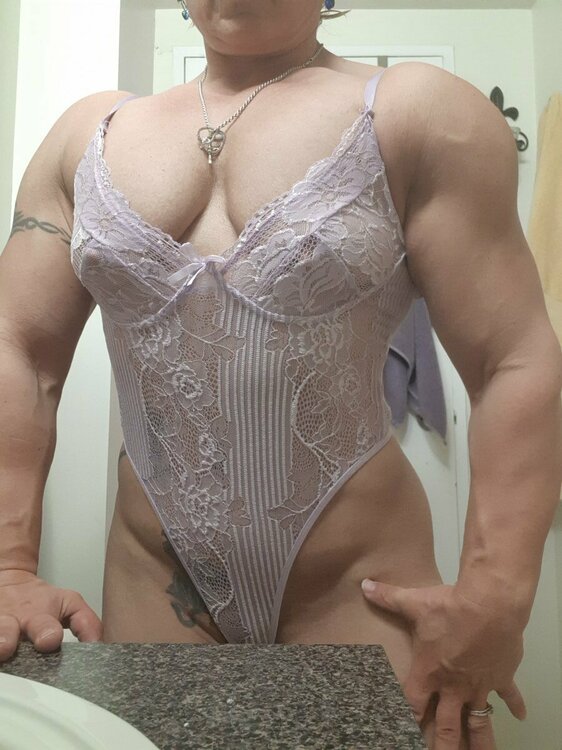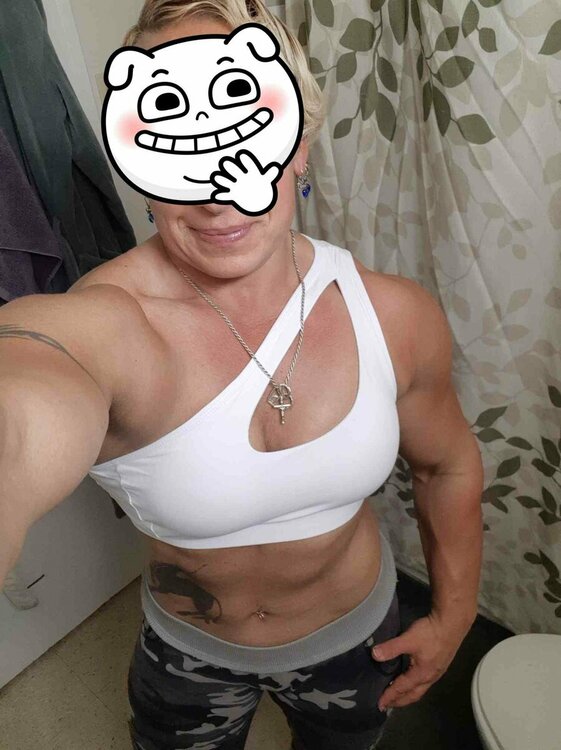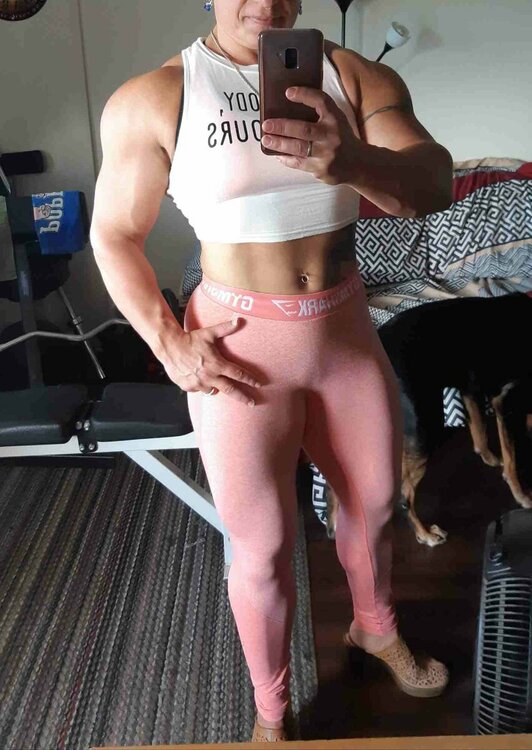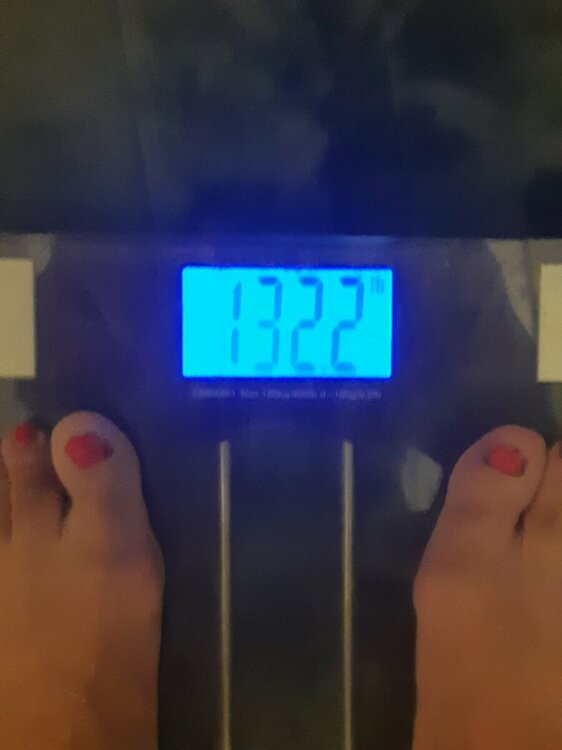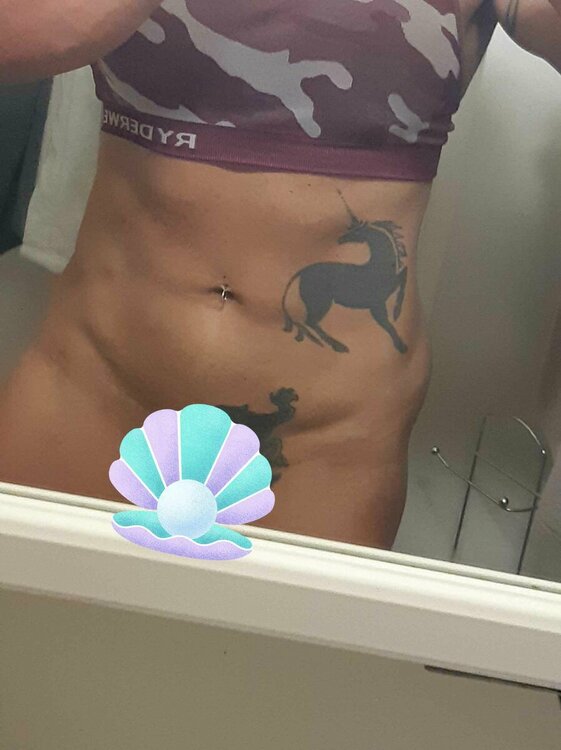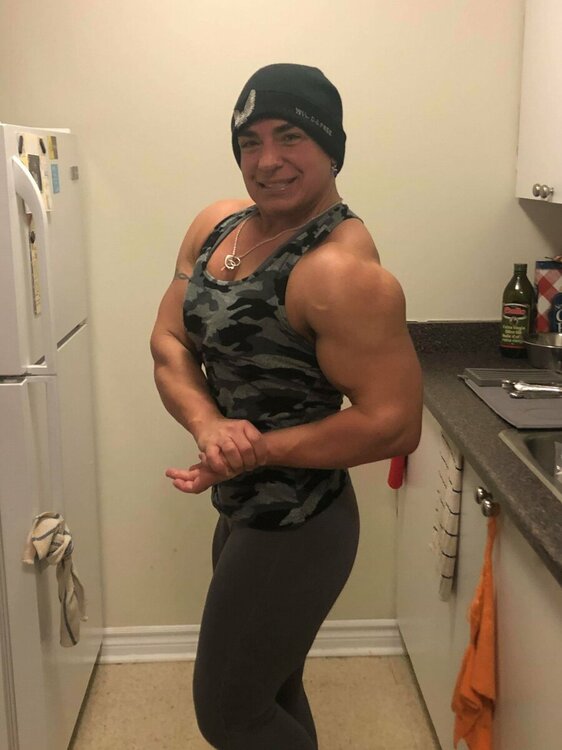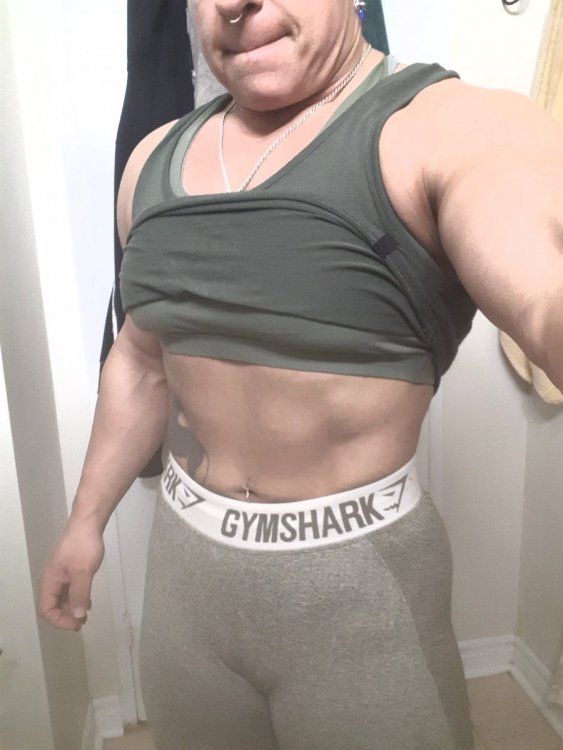-
Posts
912 -
Joined
-
Last visited
-
Days Won
71
Everything posted by musclebeauty
-
There are two types of Diabetes Mellitus: types 1 and 2. The pathology of each of the two diseases is completely different and, from a nutrition and exercise viewpoint, each should be treated differently. Blood glucose levels are controlled by the hormone insulin produced by the pancreas. Glucose comes from our food from starchy foods, like rice, potatoes, bread, etc and from sugar. It is also manufactured in the liver from where it is passed into the blood. In diabetes glucose cannot be used effectively as a fuel by the body so levels rise in the blood and excess passes into urine. This is why diabetics, before diagnosis, pee more and feel excessively thirsty. There may also be other symptoms like lethargy, blurred vision, lack of concentration and fatigue. In Type 1 Diabetes there is no insulin produced from the pancreas at all, so the patient has to be treated with injections of insulin a number of times a day, as well as following a suitable diet. There are a number of different types of insulin regimens advised by doctors, and which regimen an individual follows may have implications for the diet. Fortunately, newer insulin regimens encourage patients to take more control over their own nutrition themselves. In Type 2 Diabetes insulin is produced from the pancreas but is unable to act properly in the body. This is as a consequence of a metabolic state of the body called insulin resistance and, because the insulin is not having its desired effect, this leads to more and more insulin being released; high blood glucose levels are associated with high blood insulin levels. Type 2 diabetes is often, but not always, associated with being overweight and it usually occurs in people over 40 years old, with the main exceptions being younger people who are morbidly obese. Regular meals and snacks are vital for optimum diabetes control, especially in respect of carbohydrate foods. Diabetics should aim to consume slow-released low glycaemic carbohydrate foods as the basis of each meal and snack. This ties in well with the goals of bodybuilders, who require regular nutrition for optimum energy levels. The plan below has been compiled to suit a diabetic bodybuilder and is suitable for someone treated with insulin and who’s looking to increase their strength and muscle size. If the insulin regimen is not so flexible, then the individual should review the meal and snack times, but the principles remain the same. If the insulin regimen involves super-fast acting varieties, then adjust the dose appropriately. If you do not control your own insulin regimen, then speak to your doctor or diabetes specialist nurse. Often diabetics feel they cannot make good muscle and strength gains due to their condition, but there is absolutely no reason why a diabetic, whether insulin-treated or not, cannot make just as good gains as a non diabetic. Indeed, there is nothing radical in a diet for type 1 diabetics; the principles are simply based on the healthy eating guidelines which everyone should be following: simply incorporate concepts applicable to muscle growth, and the size and strength results will come. Some foods are marketed especially for diabetics such as special chocolates, cakes, biscuits, etc, but these are actually not recommended. Eating a range of low fat, low sugar, high fibre ‘ordinary’ foods is far better. Many of these ‘diabetic products’ are no lower in fat or calories and are normally more expensive. Some contain the sweetener sorbitol which can cause wind, stomach upsets and diarrhoea. Normal ‘low sugar’/’sugar-free’ products, like low calorie and ‘diet’ soft drinks, are fine to consume. Your goal is to gain muscle and strength without the concurrent addition of body fat. To do this, you need to ensure that you have a good understanding of your insulin regimen and that you are well controlled. The key to quality weight gain is to eat plenty of quality food spread over six or seven smaller meals / snacks. Include plenty of high protein food choices like lean meat, chicken, fish, eggs and milk; low glycaemic starchy carbs; fruit and vegetables (nuts and pulses are also good sources of protein). Also include some sources of the essential fatty acids, like oily fish or flaxseeds/linseeds. Spread meals and snacks regularly through the day and try to adhere to a schedule like the one below. In respect of protein supplements, always look at the label. Whey protein can be a useful addition in your quest for making gains, but the quality of product varies hugely from brand to brand. Ensure you have a product which is over 75g protein per 100g, otherwise it will contain too many simple carbohydrates and this could adversely affect your blood sugar control. Weight gain supplement formulas should be avoided by diabetics as many contain too high levels of high glycaemic carbs. Remember supplements are there to supplement and are not meant to replace good wholesome food. Diabetic Bodybuilding Meal Plan The following diet plan is an example plan of a healthy diet which is suitable for a diabetic on insulin to follow in bodybuilding. Use it as a base and to help you learn what are healthy nutritious foods to include. Vary food choices and drink plenty of water through the day. Check with your doctor or diabetes specialist nurse before following this plan, and if you do not control your own insulin regimen, levels may need adjusting in line with the increased food intake. Wake 7.30 am Breakfast Large bowl porridge made with 250ml skimmed milk + tbsp ground linseeds (+ sweetener, if desired) 2 slices granary bread toasted 4 egg whites + 1 yolk (scrambled/boiled) 200ml orange juice 10.30am Sandwich: 2 slices granary bread + tuna or sliced chicken breast or lean off-bone ham + salad Banana 12.30pm Large chicken breast or mackerel fillet 4-5 rye crispbread or oatcakes Tbsp seeds (e.g. sunflower seeds) Large varied salad Low fat, no added sugar yoghurt 3.00pm 6 oatcakes 200g cottage cheese or quark Large handful mixed nuts Apple 45 mins pre-workout Shake: 30g whey protein powder + 30g oats in water / skimmed milk TRAIN – 45-60 minutes Immediately post workout 2 scoops whey protein 2 oatcakes 7.30pm Lean red meat 70g (dry weight) basmati rice or 5-6 small boiled new potatoes or large dry roasted sweet potato Large serving of vegetables Low fat, no added sugar yoghurt 10.00pm Large bowl unsweetened muesli + 250ml skimmed milk Weight training should be performed three or four times per week with intense sessions for around 45-60 minutes. It would also be an idea to incorporate 45 minutes low intensity steady cardiovascular training two or three times a week to help with heart health, to help keep body fat levels down and for general fitness. As with all the meal plans on MuscleTalk this is merely a guide: eat a variety of different meats, fish, alternatives, complex carbohydrates, fruit and vegetables every day, and drink plenty of water. Adapt the plan to suit your own needs, daily routine and insulin protocol and vary portions and food choices from day to day.
-
All the women who compete in bodybuilding, fitness, figure, physique, bikini, or whatever the category, have so much in common they constitute a Sisterhood of Muscle. They often encounter the same obstacles from friends, family and people in general who resist the idea of women “going too far” in terms of muscle development and definition. They are also often surprised at the degree to which their muscles become the objects of fetish by (mostly) men, which can be off-putting to many. Any of these women in any category are liable to find themselves facing opposition if their genetics and efforts allow them to create a degree of development that exceeds what is expected. Even fitness or figure competitors are sometimes told they are “too big” or “too muscular” by competition judges. So, they find themselves having to do excessive cardio and starve away their shape in order to conform to standards that the fans don’t necessarily like, but which federation officials have decided are necessary to keep things from “going too far.” Many models who work out to create fit and fabulous bodies also run into problems when agents and casting people feel that any kind of muscularity — a little bit of biceps, triceps or deltoid definition — disqualifies them from mainstream modeling jobs. Look at the major fitness-oriented magazines, and you’ll see the women featured are usually lean and fit but show little sign of having done any real work muscle building in the gym.
-

What is s bodybuilding diet??
topic replied to musclebeauty's musclebeauty in Nutrition, Diet and Recipes
It was very informative for sure... -
Guys...your wife is watching your biceps getting bigger! Is she jealous? Does she want to start “bodybuilding” but is afraid of getting TOO big? She’s secretly want’s that finely chiseled body, too! Here’s how she can build muscle for a lean, sexy physique without the fear of embarrassing you with bigger arms as you walk down the beach... There are a lot of myths around women and bodybuilding and they just don’t seem to die. I’d like to share with you an article that sheds light on women and weight training that will pave the path for your wife or girlfriend to adopt the bodybuilding lifestyle with you. That’s right. We’re going to bust the women and weight training myths right NOW! Who better to do that than a woman who weight trains and understands your wife’s fears regarding women and weights? Women and Weight Training Myth #1 – Weight training will make woman huge and manly. BUSTED - Like most people, when you think of women and weight training you automatically relate that image to the professional female bodybuilder strutting her oiled-up mammoth physique across stage and striking a pose. What’s NOT mentioned is that 99.9% of the professional female bodybuilders supplement with steroids to develop superhuman muscles. By the law of nature, women do not produce near the amount of muscle building hormone, testosterone, necessary to build huge swollen, vein-popping muscles. A woman is just not capable of building that type of massive muscle simply by lifting weights. Bottom line: Weight training will NOT make a woman big and overly muscular. Women and Weight Training Myth #2 – Women who weight train will lose their breast size. BUSTED – (pardon the pun) Breast tissue is made up of primarily fat tissue. A loss of body fat will results in smaller breast size. Weight training develops muscle tissue. Adding strength training will develop the underlying chest muscle on a woman and can add more shape to her upper body, creating those eye-pleasing and sexy curves. In addition, a good chest training program will add stunning high cleavage for that perfect fit in a dress or bikini. To put it bluntly, the only way for a woman to lose her breast size is if she loses a lot of body fat. Women and Weight Training Myth #3 – A woman’s muscle will turn into fat if she stops weight training. BUSTED – There is an astronomical amount of women who won’t weight train for fear their muscle will somehow magically turn into fat if they stop weight training. Again, muscle and fat are two completely different tissues responsible for their own functions. Muscle is metabolically active (calorie burning) and fat is metabolically inactive (fat storing). Muscle CANNOT Ever, In Any Case, turn into fat any more than fat can turn into muscle. One can only build or lose muscle OR gain or lose fat. The two separate tissues are not interchangeable. Women and Weight Training Myth #4 – Muscle weighs more than fat. BUSTED – It’s no wonder women believe this ridicules statement. Dr. Phil has been known to say it in his highly publicized weight-loss book. It’s a fact that a pound of muscle and a pound of fat weigh the same, a pound. What most women don’t realize is that a pound of muscle is denser and takes up less space than a pound of fat. Therefore, having more developed muscle on the female frame with less body fat will make her leaner, tighter, and give off that “toned” look they are after. Bottom line: Adding natural muscle mass through weight training accentuates a lady’s femininity. Endless Benefits for Women Who Weight Train: Has training partner by default Improves stamina Improves sex life Lifts and shapes the booty Relieves depression Builds a shapely physique Improves posture Controls weight Builds positive self-image Creates a positive attitude Builds character Boosts immune system Clears the mind Creates more energy Benefits other sports Raises resting metabolic rate Slows the aging process Decreases chance of injury Builds a stronger heart Creates anti-aging effect Improves digestion Relieves chronic pain Builds stronger bones Improves circulation Improves flexibility Lowers LDL (bad) Increases HDL (good) Lowers hypertension Lowers risk for cancers Lowers risk of heart disease Lowers the risk of diabetes Makes you a happy partner A woman with a well-shaped body through weight training will feel better about herself. In addition, she’ll better understand the process you go through to develop your physique, and have a better appreciation for weight training. There’s a special bond with a couple that trains together.
-

Woman and sleep everything you need to know
topic replied to musclebeauty's musclebeauty in Womens Health & Fitness
I guess they dont believe in sex lol -
Here's what you need to know about diet and nutrition for weight training and bodybuilding: It’s not all that different from a normal, healthy athlete’s diet, except for some emphasis on quantity and meal timing in various training phases.1 This, however, is where detail becomes very important. why It Works Pros and Cons How It Compares Here's what you need to know about diet and nutrition for weight training and bodybuilding: It’s not all that different from a normal, healthy athlete’s diet, except for some emphasis on quantity and meal timing in various training phases.1 This, however, is where detail becomes very important. What Experts Say "The bodybuilding diet can be centered around healthy whole foods such as veggies, oatmeal, lean proteins, and some healthy fats, but the meal plans are typically very regimented. They require a lot of planning and meal prep. Additionally, the cutting phases can be difficult to follow." —Kelly Plowe, MS, RD Background Weight training and bodybuilding nutrition are sciences like anything else. There's biology and biochemistry and physiology, with rules and a base of evidence. Selling supplements, most of which are not needed, has become such a huge business in the commercial weight training and bodybuilding industry that it is almost impossible to know if you are getting an objective evaluation of a bodybuilding diet. Although diets like Atkins, South Beach, and Ornish have become popular, the consensus among dietitians and nutritionists is that a healthy diet is less stringent in requirements and more balanced across the major nutrients. In general: Eat plenty of fruit and vegetables, whole grains, beans, nuts, and seeds; some lean meats, fish, eggs, low-fat dairy products; and mono and polyunsaturated oils Limit intake of saturated fat, cholesterol, salt, alcohol, added sugars, and sugary foods Drink plenty of water Maintain a normal weight Exercise regularly People who exercise have different requirements because the more you exercise, the more energy intake is required, therefore you will need to increase your overall protein and calorie intake. This also applies to casual exercisers, but it may not apply to you if fat loss is one of your goals. In the case that weight loss is a goal, you need to create an energy deficit; which means that the energy (or calories) you consume in food is less than the energy you expend in exercise and daily living. Your weight training, in this case, is to assist with fat loss while attempting to maintain muscle.1 When you lose weight, you need to hold onto muscle and bone while shedding fat. This is tricky because the body is not used to breaking down some tissue (fat) and building up other tissue (muscle) at the same time. Breaking down is called catabolism and building up is called anabolism, as in "anabolic steroids." These are contradictory processes, but weight training can help maintain muscle while losing fat.2 How It Works If you weight train for sports, weightlifting competition, bodybuilding, or as a way to maintain fitness or appearance now that you’ve reached an ideal weight, you will probably be interested in gaining muscle and maintaining low body fat with a bodybuilding diet. To build extra muscle, you need to eat in excess of what you currently eat, and work out with weights on a regular basis, slowly increasing intensity, repetition, and weight depending on whether your focus is strength or increased muscle mass (i.e., body building). How much muscle you can gain, how quickly, and with what definition, is largely determined by your workout routine, workout frequency, genetics, and age. But everyone at almost any age should be able to gain some muscle and strength with weight training. Proper nutrition is a crucial element in the muscle-building process.1 Background How It Works Pros and Cons How It Compares Here's what you need to know about diet and nutrition for weight training and bodybuilding: It’s not all that different from a normal, healthy athlete’s diet, except for some emphasis on quantity and meal timing in various training phases.1 This, however, is where detail becomes very important. What Experts Say "The bodybuilding diet can be centered around healthy whole foods such as veggies, oatmeal, lean proteins, and some healthy fats, but the meal plans are typically very regimented. They require a lot of planning and meal prep. Additionally, the cutting phases can be difficult to follow." —Kelly Plowe, MS, RD Background Weight training and bodybuilding nutrition are sciences like anything else. There's biology and biochemistry and physiology, with rules and a base of evidence. Selling supplements, most of which are not needed, has become such a huge business in the commercial weight training and bodybuilding industry that it is almost impossible to know if you are getting an objective evaluation of a bodybuilding diet. Although diets like Atkins, South Beach, and Ornish have become popular, the consensus among dietitians and nutritionists is that a healthy diet is less stringent in requirements and more balanced across the major nutrients. In general: Eat plenty of fruit and vegetables, whole grains, beans, nuts, and seeds; some lean meats, fish, eggs, low-fat dairy products; and mono and polyunsaturated oils Limit intake of saturated fat, cholesterol, salt, alcohol, added sugars, and sugary foods Drink plenty of water Maintain a normal weight Exercise regularly People who exercise have different requirements because the more you exercise, the more energy intake is required, therefore you will need to increase your overall protein and calorie intake. This also applies to casual exercisers, but it may not apply to you if fat loss is one of your goals. In the case that weight loss is a goal, you need to create an energy deficit; which means that the energy (or calories) you consume in food is less than the energy you expend in exercise and daily living. Your weight training, in this case, is to assist with fat loss while attempting to maintain muscle.1 When you lose weight, you need to hold onto muscle and bone while shedding fat. This is tricky because the body is not used to breaking down some tissue (fat) and building up other tissue (muscle) at the same time. Breaking down is called catabolism and building up is called anabolism, as in "anabolic steroids." These are contradictory processes, but weight training can help maintain muscle while losing fat.2 How It Works If you weight train for sports, weightlifting competition, bodybuilding, or as a way to maintain fitness or appearance now that you’ve reached an ideal weight, you will probably be interested in gaining muscle and maintaining low body fat with a bodybuilding diet. To build extra muscle, you need to eat in excess of what you currently eat, and work out with weights on a regular basis, slowly increasing intensity, repetition, and weight depending on whether your focus is strength or increased muscle mass (i.e., body building). How much muscle you can gain, how quickly, and with what definition, is largely determined by your workout routine, workout frequency, genetics, and age. But everyone at almost any age should be able to gain some muscle and strength with weight training. Proper nutrition is a crucial element in the muscle-building process.1 Overeating is not a good idea if you are already overweight. It is recommended that you get fit first because when you overeat for the purposes of gaining muscle you also gain some fat. Let’s say you are a slender guy of 6 feet (180 centimeters) and 154 pounds (70 kilograms) and you want to bulk up with extra muscle and eventually stabilize at a low percentage of body fat. Here is how you would do it: Eat more: Increase your daily intake of energy (calories) by about 15%. It should not be all protein but the extra protein you consume, either in supplements or protein foods, should be low in fat. Stay close to the current guidelines for protein requirements for weight trainers. Hiring a sports dietitian with some experience in weight training is also an option.3 Train with weights: Begin a solid weight training program targeting all the main large muscle groups such as the arms, legs, shoulders, chest, back, and abdominals. The extra energy you consume will fuel muscle growth as the exercise stimulates growth. Cut, lose, and shed: After you bulk up with extra muscle and fat, you need to lose much of that fat while maintaining the muscle. Gaining fat is somewhat inevitable during this process but you should be especially careful to eat healthy food at this time. Fast foods should be kept to a minimum. Eat healthy but big. In step 3, cut back your energy intake by the 15% you added previously. Because you're now not the lean guy you once were, you may have to eventually eat slightly more to maintain that extra muscle, but that comes later. Background How It Works Pros and Cons How It Compares Here's what you need to know about diet and nutrition for weight training and bodybuilding: It’s not all that different from a normal, healthy athlete’s diet, except for some emphasis on quantity and meal timing in various training phases.1 This, however, is where detail becomes very important. What Experts Say "The bodybuilding diet can be centered around healthy whole foods such as veggies, oatmeal, lean proteins, and some healthy fats, but the meal plans are typically very regimented. They require a lot of planning and meal prep. Additionally, the cutting phases can be difficult to follow." —Kelly Plowe, MS, RD Background Weight training and bodybuilding nutrition are sciences like anything else. There's biology and biochemistry and physiology, with rules and a base of evidence. Selling supplements, most of which are not needed, has become such a huge business in the commercial weight training and bodybuilding industry that it is almost impossible to know if you are getting an objective evaluation of a bodybuilding diet. Although diets like Atkins, South Beach, and Ornish have become popular, the consensus among dietitians and nutritionists is that a healthy diet is less stringent in requirements and more balanced across the major nutrients. In general: Eat plenty of fruit and vegetables, whole grains, beans, nuts, and seeds; some lean meats, fish, eggs, low-fat dairy products; and mono and polyunsaturated oils Limit intake of saturated fat, cholesterol, salt, alcohol, added sugars, and sugary foods Drink plenty of water Maintain a normal weight Exercise regularly People who exercise have different requirements because the more you exercise, the more energy intake is required, therefore you will need to increase your overall protein and calorie intake. This also applies to casual exercisers, but it may not apply to you if fat loss is one of your goals. In the case that weight loss is a goal, you need to create an energy deficit; which means that the energy (or calories) you consume in food is less than the energy you expend in exercise and daily living. Your weight training, in this case, is to assist with fat loss while attempting to maintain muscle.1 When you lose weight, you need to hold onto muscle and bone while shedding fat. This is tricky because the body is not used to breaking down some tissue (fat) and building up other tissue (muscle) at the same time. Breaking down is called catabolism and building up is called anabolism, as in "anabolic steroids." These are contradictory processes, but weight training can help maintain muscle while losing fat.2 How It Works If you weight train for sports, weightlifting competition, bodybuilding, or as a way to maintain fitness or appearance now that you’ve reached an ideal weight, you will probably be interested in gaining muscle and maintaining low body fat with a bodybuilding diet. To build extra muscle, you need to eat in excess of what you currently eat, and work out with weights on a regular basis, slowly increasing intensity, repetition, and weight depending on whether your focus is strength or increased muscle mass (i.e., body building). How much muscle you can gain, how quickly, and with what definition, is largely determined by your workout routine, workout frequency, genetics, and age. But everyone at almost any age should be able to gain some muscle and strength with weight training. Proper nutrition is a crucial element in the muscle-building process.1 Overeating is not a good idea if you are already overweight. It is recommended that you get fit first because when you overeat for the purposes of gaining muscle you also gain some fat. Let’s say you are a slender guy of 6 feet (180 centimeters) and 154 pounds (70 kilograms) and you want to bulk up with extra muscle and eventually stabilize at a low percentage of body fat. Here is how you would do it: Eat more: Increase your daily intake of energy (calories) by about 15%. It should not be all protein but the extra protein you consume, either in supplements or protein foods, should be low in fat. Stay close to the current guidelines for protein requirements for weight trainers. Hiring a sports dietitian with some experience in weight training is also an option.3 Train with weights: Begin a solid weight training program targeting all the main large muscle groups such as the arms, legs, shoulders, chest, back, and abdominals. The extra energy you consume will fuel muscle growth as the exercise stimulates growth. Cut, lose, and shed: After you bulk up with extra muscle and fat, you need to lose much of that fat while maintaining the muscle. Gaining fat is somewhat inevitable during this process but you should be especially careful to eat healthy food at this time. Fast foods should be kept to a minimum. Eat healthy but big. In step 3, cut back your energy intake by the 15% you added previously. Because you're now not the lean guy you once were, you may have to eventually eat slightly more to maintain that extra muscle, but that comes later. Bodybuilders do this to prepare themselves for competition: They put on muscle and some fat by eating, then they strip off the fat, leaving the muscle to show through. It’s called "cutting."2 What to Eat Compliant Foods Lean protein Fruits and vegetables Whole grains Healthy fats Non-Compliant Foods Sugar and added sweeteners (in excess) Refined carbohydrates (in excess) In the cutting phase, the bodybuilding diet should be low in fat, around 20%. Maintain protein intake to help protect muscle while cutting excess fat and carbohydrates, particularly added sugar and sweets and white flour products. Keep up the supply of antioxidants with fruit, veggies, and whole grains. Aim for these proportions of macronutrients: Bulking phase Protein: 15% to 20% Fat: 20% to 30% Carbohydrate: 50% to 60% Cutting phase Protein: 20% to 25% Fat: 15% to 20% Carbohydrate: 55% to 60% How It Compares Here's what you need to know about diet and nutrition for weight training and bodybuilding: It’s not all that different from a normal, healthy athlete’s diet, except for some emphasis on quantity and meal timing in various training phases.1 This, however, is where detail becomes very important. What Experts Say "The bodybuilding diet can be centered around healthy whole foods such as veggies, oatmeal, lean proteins, and some healthy fats, but the meal plans are typically very regimented. They require a lot of planning and meal prep. Additionally, the cutting phases can be difficult to follow." —Kelly Plowe, MS, RD Background Weight training and bodybuilding nutrition are sciences like anything else. There's biology and biochemistry and physiology, with rules and a base of evidence. Selling supplements, most of which are not needed, has become such a huge business in the commercial weight training and bodybuilding industry that it is almost impossible to know if you are getting an objective evaluation of a bodybuilding diet. Although diets like Atkins, South Beach, and Ornish have become popular, the consensus among dietitians and nutritionists is that a healthy diet is less stringent in requirements and more balanced across the major nutrients. In general: Eat plenty of fruit and vegetables, whole grains, beans, nuts, and seeds; some lean meats, fish, eggs, low-fat dairy products; and mono and polyunsaturated oils Limit intake of saturated fat, cholesterol, salt, alcohol, added sugars, and sugary foods Drink plenty of water Maintain a normal weight Exercise regularly People who exercise have different requirements because the more you exercise, the more energy intake is required, therefore you will need to increase your overall protein and calorie intake. This also applies to casual exercisers, but it may not apply to you if fat loss is one of your goals. In the case that weight loss is a goal, you need to create an energy deficit; which means that the energy (or calories) you consume in food is less than the energy you expend in exercise and daily living. Your weight training, in this case, is to assist with fat loss while attempting to maintain muscle.1 When you lose weight, you need to hold onto muscle and bone while shedding fat. This is tricky because the body is not used to breaking down some tissue (fat) and building up other tissue (muscle) at the same time. Breaking down is called catabolism and building up is called anabolism, as in "anabolic steroids." These are contradictory processes, but weight training can help maintain muscle while losing fat.2 How It Works If you weight train for sports, weightlifting competition, bodybuilding, or as a way to maintain fitness or appearance now that you’ve reached an ideal weight, you will probably be interested in gaining muscle and maintaining low body fat with a bodybuilding diet. To build extra muscle, you need to eat in excess of what you currently eat, and work out with weights on a regular basis, slowly increasing intensity, repetition, and weight depending on whether your focus is strength or increased muscle mass (i.e., body building). How much muscle you can gain, how quickly, and with what definition, is largely determined by your workout routine, workout frequency, genetics, and age. But everyone at almost any age should be able to gain some muscle and strength with weight training. Proper nutrition is a crucial element in the muscle-building process.1 Overeating is not a good idea if you are already overweight. It is recommended that you get fit first because when you overeat for the purposes of gaining muscle you also gain some fat. Let’s say you are a slender guy of 6 feet (180 centimeters) and 154 pounds (70 kilograms) and you want to bulk up with extra muscle and eventually stabilize at a low percentage of body fat. Here is how you would do it: Eat more: Increase your daily intake of energy (calories) by about 15%. It should not be all protein but the extra protein you consume, either in supplements or protein foods, should be low in fat. Stay close to the current guidelines for protein requirements for weight trainers. Hiring a sports dietitian with some experience in weight training is also an option.3 Train with weights: Begin a solid weight training program targeting all the main large muscle groups such as the arms, legs, shoulders, chest, back, and abdominals. The extra energy you consume will fuel muscle growth as the exercise stimulates growth. Cut, lose, and shed: After you bulk up with extra muscle and fat, you need to lose much of that fat while maintaining the muscle. Gaining fat is somewhat inevitable during this process but you should be especially careful to eat healthy food at this time. Fast foods should be kept to a minimum. Eat healthy but big. In step 3, cut back your energy intake by the 15% you added previously. Because you're now not the lean guy you once were, you may have to eventually eat slightly more to maintain that extra muscle, but that comes later. Bodybuilders do this to prepare themselves for competition: They put on muscle and some fat by eating, then they strip off the fat, leaving the muscle to show through. It’s called "cutting."2 What to Eat Compliant Foods Lean protein Fruits and vegetables Whole grains Healthy fats Non-Compliant Foods Sugar and added sweeteners (in excess) Refined carbohydrates (in excess) In the cutting phase, the bodybuilding diet should be low in fat, around 20%. Maintain protein intake to help protect muscle while cutting excess fat and carbohydrates, particularly added sugar and sweets and white flour products. Keep up the supply of antioxidants with fruit, veggies, and whole grains. Aim for these proportions of macronutrients: Bulking phase Protein: 15% to 20% Fat: 20% to 30% Carbohydrate: 50% to 60% Cutting phase Protein: 20% to 25% Fat: 15% to 20% Carbohydrate: 55% to 60% In either phase, don’t exceed 1 gram per pound of body weight of protein (2.2 grams/kilogram). A little more probably won’t hurt a healthy person, but chances are, based on the science of protein requirements for athletes, it won’t help either. It will only cost you in expensive supplements or food. Any hint of kidney disease and you would need to be cautious about excessive protein intake. Consult your doctor for advice if this applies. Some weight trainers significantly increase their protein intake in the form of shakes, supplements, and even the occasional whole turkey without figuring out how much is useful or even how much they are ingesting. The American College of Sports Medicine (ACSM) estimates the requirements for strength trainers at 1.6 to 1.7 grams per kilogram of body weight per day (about 0.8 grams per pound) and may require an intake of up to 2.0 grams per kilogram of body weight per day. You need to eat sufficient food and carbohydrate to sustain your activities. Too little carbohydrate and your body will break down your muscle for glucose and reverse all those hard-gotten gains. Don’t believe advice that says carbohydrates are fattening. Instead, modify your carbohydrate intake for the better by avoiding refined flours, sugars, sweets, and other quickly absorbed or processed carbohydrates when you are not exercising intensely. Recommended Timing For elite athletes, sports nutritionists and coaches take eating very seriously, because a few fractions of a second in a sprint or a few seconds in longer races can mean the difference between a gold medal and a "thank you for coming." Even in the amateur ranks, you can maximize your workout by eating in a way that makes the most of your hard work. Meal timing is an important part of this.1 Pre-Exercise Meals Some weight trainers do better with six smaller meals a day rather than three larger meals. Don't fret about this; it doesn't suit everyone. However, always eat breakfast. Weight trainers don’t usually expend the amount of energy in training that endurance athletes do, so they don't have to be as acutely aware of the intake of carbohydrate required to fuel such effort. For example, a marathoner or triathlete may require 7 to 10 grams of carbohydrate per kilogram body weight per day.4 This is a lot of carbohydrates—equivalent to more than 32 slices of bread for a 150-pound athlete. These principles for meals prior to exercise (training or competition) are generally supported by sports nutritionists and have been modified for the strength athlete. Eat meals low in fat and fiber with some protein and carbohydrate. Fiber can and should be part of a healthy diet in other meals. Experiment and find your tolerance for various foods before and during exercise; this is important because many of us react differently to fiber, foods like beans, milk, various fruits, and so on. Eat your main meal three to four hours before exercise. Eat a smaller meal one to two hours before exercise. Within an hour of activity, liquids such as sports drinks and gels, protein shakes, or foods that are not too heavy may be best. A very small percentage of people get a reactive blood glucose drop (hypoglycemia) if they eat a high-carbohydrate meal; adding protein to the meal can prevent this. Running sports seem to produce intestinal discomfort more than stationary or supported sports like weight training, swimming or cycling; so the pre-meal variety can be greater if you’re not a runner.5 Eating During Exercise Unless you do extreme sessions for considerably longer than an hour or include intense cardio or strength-endurance weights programs, you probably don't need anything other than water during a workout. For exercise lasting longer than an hour, carbohydrates and electrolytes should be considered in the form of a sports drink, gel, or bar.5 Post-Exercise Meals How you eat to recover from exercise is one of the most important principles in exercise nutrition. Glucose, or glycogen, is the athlete’s and exerciser’s main fuel. You get it from carbohydrate foods and drinks. If you don’t refuel sufficiently after each session, glucose stores in muscle will remain depleted and unprepared for the next workout. This can lead to longer-term muscle fatigue and worse performance. What's more, inadequate refueling after your session won't take advantage of that hard muscle work by giving those muscles an anabolic boost that repairs and rebuilds.5 Weight trainers do not use as much glucose fuel as higher intensity or longer duration aerobic sports like track and endurance running and cycling. But even so, it pays to keep those glycogen stores topped up if you want to be at your best in training. Low numbers of repetitions with heavy weights develop strength, whereas lighter weights and more repetitions build muscle size and endurance. The latter is likely to expend more energy. Consume close to 20 grams of high-quality protein within 60 minutes of a weights session. The closer you intake protein to the workout the better. Research has shown that an intake of high-quality protein promotes enhanced muscle recovery and rebuilding after a workout.6 Carbohydrates also play an important role, immediately after exercise usually in a ratio of 3 grams of carbohydrates for every 1 gram of protein. Options that meet these requirements include 17 fluid ounces of flavored low-fat milk; 1 cup fruit salad with 7 ounces of flavored yogurt; or a large glass of nonfat milk with two slices of bread and honey or jam (no butter). Resources and Tips Don't worry too much about the finer detail of calculating quantities if you don't wish to. The detail is there for those who can use this precision, but most people don't. Experience and getting to know how your body works is probably more important, as well as trial and error. Here's what matters most: Eat some carbohydrate about 30 minutes before a workout session.7 For a sessions that include cardio and are considerably longer than an hour at moderate to high intensity, you may need to refuel with gels or a sports drink during the session. Eat some protein and carbohydrate immediately or within 30 minutes of the end of the workout. Use the 3:1 carbohydrates to protein ratio. Don't use protein supplements excessively. You can get the required amount of quality protein from lean chicken, fish, soy, skim milk, and some red meat. Eat a healthy diet low in saturated fat and cholesterol and high in fruit, vegetables, beans, whole grains, and quality monounsaturated and polyunsaturated fats (found in nuts, seeds, and oils). Drink plenty of fluids to replace the water you lose to sweat. Beverages like tea and coffee are fine for this. The diuretic effect of these drinks has been overstated. If you do more than one session each day, eat a post-exercise snack every hour until regular meals resume. Few weight trainers choose to do two weights sessions a day, but some do an early session of cardio and a later session of weights or vice versa. A word about dietary supplements: They are big business and not regulated by the FDA. When evaluating supplements for consumption, make sure a third-party stamp is on the supplements like USP or NSF. Protein powder supplements, particularly whey-based supplements, do have a role to play for busy weight trainers. But cheaper solutions may be available.8 Pros and Cons Pros Balanced nutrition Effective Cons Complicated Can promote unhealthy behavior Pros and Cons How It Compares Here's what you need to know about diet and nutrition for weight training and bodybuilding: It’s not all that different from a normal, healthy athlete’s diet, except for some emphasis on quantity and meal timing in various training phases.1 This, however, is where detail becomes very important. What Experts Say "The bodybuilding diet can be centered around healthy whole foods such as veggies, oatmeal, lean proteins, and some healthy fats, but the meal plans are typically very regimented. They require a lot of planning and meal prep. Additionally, the cutting phases can be difficult to follow." —Kelly Plowe, MS, RD Background Weight training and bodybuilding nutrition are sciences like anything else. There's biology and biochemistry and physiology, with rules and a base of evidence. Selling supplements, most of which are not needed, has become such a huge business in the commercial weight training and bodybuilding industry that it is almost impossible to know if you are getting an objective evaluation of a bodybuilding diet. Although diets like Atkins, South Beach, and Ornish have become popular, the consensus among dietitians and nutritionists is that a healthy diet is less stringent in requirements and more balanced across the major nutrients. In general: Eat plenty of fruit and vegetables, whole grains, beans, nuts, and seeds; some lean meats, fish, eggs, low-fat dairy products; and mono and polyunsaturated oils Limit intake of saturated fat, cholesterol, salt, alcohol, added sugars, and sugary foods Drink plenty of water Maintain a normal weight Exercise regularly People who exercise have different requirements because the more you exercise, the more energy intake is required, therefore you will need to increase your overall protein and calorie intake. This also applies to casual exercisers, but it may not apply to you if fat loss is one of your goals. In the case that weight loss is a goal, you need to create an energy deficit; which means that the energy (or calories) you consume in food is less than the energy you expend in exercise and daily living. Your weight training, in this case, is to assist with fat loss while attempting to maintain muscle.1 When you lose weight, you need to hold onto muscle and bone while shedding fat. This is tricky because the body is not used to breaking down some tissue (fat) and building up other tissue (muscle) at the same time. Breaking down is called catabolism and building up is called anabolism, as in "anabolic steroids." These are contradictory processes, but weight training can help maintain muscle while losing fat.2 How It Works If you weight train for sports, weightlifting competition, bodybuilding, or as a way to maintain fitness or appearance now that you’ve reached an ideal weight, you will probably be interested in gaining muscle and maintaining low body fat with a bodybuilding diet. To build extra muscle, you need to eat in excess of what you currently eat, and work out with weights on a regular basis, slowly increasing intensity, repetition, and weight depending on whether your focus is strength or increased muscle mass (i.e., body building). How much muscle you can gain, how quickly, and with what definition, is largely determined by your workout routine, workout frequency, genetics, and age. But everyone at almost any age should be able to gain some muscle and strength with weight training. Proper nutrition is a crucial element in the muscle-building process.1 Overeating is not a good idea if you are already overweight. It is recommended that you get fit first because when you overeat for the purposes of gaining muscle you also gain some fat. Let’s say you are a slender guy of 6 feet (180 centimeters) and 154 pounds (70 kilograms) and you want to bulk up with extra muscle and eventually stabilize at a low percentage of body fat. Here is how you would do it: Eat more: Increase your daily intake of energy (calories) by about 15%. It should not be all protein but the extra protein you consume, either in supplements or protein foods, should be low in fat. Stay close to the current guidelines for protein requirements for weight trainers. Hiring a sports dietitian with some experience in weight training is also an option.3 Train with weights: Begin a solid weight training program targeting all the main large muscle groups such as the arms, legs, shoulders, chest, back, and abdominals. The extra energy you consume will fuel muscle growth as the exercise stimulates growth. Cut, lose, and shed: After you bulk up with extra muscle and fat, you need to lose much of that fat while maintaining the muscle. Gaining fat is somewhat inevitable during this process but you should be especially careful to eat healthy food at this time. Fast foods should be kept to a minimum. Eat healthy but big. In step 3, cut back your energy intake by the 15% you added previously. Because you're now not the lean guy you once were, you may have to eventually eat slightly more to maintain that extra muscle, but that comes later. Bodybuilders do this to prepare themselves for competition: They put on muscle and some fat by eating, then they strip off the fat, leaving the muscle to show through. It’s called "cutting."2 What to Eat Compliant Foods Lean protein Fruits and vegetables Whole grains Healthy fats Non-Compliant Foods Sugar and added sweeteners (in excess) Refined carbohydrates (in excess) In the cutting phase, the bodybuilding diet should be low in fat, around 20%. Maintain protein intake to help protect muscle while cutting excess fat and carbohydrates, particularly added sugar and sweets and white flour products. Keep up the supply of antioxidants with fruit, veggies, and whole grains. Aim for these proportions of macronutrients: Bulking phase Protein: 15% to 20% Fat: 20% to 30% Carbohydrate: 50% to 60% Cutting phase Protein: 20% to 25% Fat: 15% to 20% Carbohydrate: 55% to 60% In either phase, don’t exceed 1 gram per pound of body weight of protein (2.2 grams/kilogram). A little more probably won’t hurt a healthy person, but chances are, based on the science of protein requirements for athletes, it won’t help either. It will only cost you in expensive supplements or food. Any hint of kidney disease and you would need to be cautious about excessive protein intake. Consult your doctor for advice if this applies. Some weight trainers significantly increase their protein intake in the form of shakes, supplements, and even the occasional whole turkey without figuring out how much is useful or even how much they are ingesting. The American College of Sports Medicine (ACSM) estimates the requirements for strength trainers at 1.6 to 1.7 grams per kilogram of body weight per day (about 0.8 grams per pound) and may require an intake of up to 2.0 grams per kilogram of body weight per day. You need to eat sufficient food and carbohydrate to sustain your activities. Too little carbohydrate and your body will break down your muscle for glucose and reverse all those hard-gotten gains. Don’t believe advice that says carbohydrates are fattening. Instead, modify your carbohydrate intake for the better by avoiding refined flours, sugars, sweets, and other quickly absorbed or processed carbohydrates when you are not exercising intensely. Recommended Timing For elite athletes, sports nutritionists and coaches take eating very seriously, because a few fractions of a second in a sprint or a few seconds in longer races can mean the difference between a gold medal and a "thank you for coming." Even in the amateur ranks, you can maximize your workout by eating in a way that makes the most of your hard work. Meal timing is an important part of this.1 Pre-Exercise Meals Some weight trainers do better with six smaller meals a day rather than three larger meals. Don't fret about this; it doesn't suit everyone. However, always eat breakfast. Weight trainers don’t usually expend the amount of energy in training that endurance athletes do, so they don't have to be as acutely aware of the intake of carbohydrate required to fuel such effort. For example, a marathoner or triathlete may require 7 to 10 grams of carbohydrate per kilogram body weight per day.4 This is a lot of carbohydrates—equivalent to more than 32 slices of bread for a 150-pound athlete. These principles for meals prior to exercise (training or competition) are generally supported by sports nutritionists and have been modified for the strength athlete. Eat meals low in fat and fiber with some protein and carbohydrate. Fiber can and should be part of a healthy diet in other meals. Experiment and find your tolerance for various foods before and during exercise; this is important because many of us react differently to fiber, foods like beans, milk, various fruits, and so on. Eat your main meal three to four hours before exercise. Eat a smaller meal one to two hours before exercise. Within an hour of activity, liquids such as sports drinks and gels, protein shakes, or foods that are not too heavy may be best. A very small percentage of people get a reactive blood glucose drop (hypoglycemia) if they eat a high-carbohydrate meal; adding protein to the meal can prevent this. Running sports seem to produce intestinal discomfort more than stationary or supported sports like weight training, swimming or cycling; so the pre-meal variety can be greater if you’re not a runner.5 Eating During Exercise Unless you do extreme sessions for considerably longer than an hour or include intense cardio or strength-endurance weights programs, you probably don't need anything other than water during a workout. For exercise lasting longer than an hour, carbohydrates and electrolytes should be considered in the form of a sports drink, gel, or bar.5 Post-Exercise Meals How you eat to recover from exercise is one of the most important principles in exercise nutrition. Glucose, or glycogen, is the athlete’s and exerciser’s main fuel. You get it from carbohydrate foods and drinks. If you don’t refuel sufficiently after each session, glucose stores in muscle will remain depleted and unprepared for the next workout. This can lead to longer-term muscle fatigue and worse performance. What's more, inadequate refueling after your session won't take advantage of that hard muscle work by giving those muscles an anabolic boost that repairs and rebuilds.5 Weight trainers do not use as much glucose fuel as higher intensity or longer duration aerobic sports like track and endurance running and cycling. But even so, it pays to keep those glycogen stores topped up if you want to be at your best in training. Low numbers of repetitions with heavy weights develop strength, whereas lighter weights and more repetitions build muscle size and endurance. The latter is likely to expend more energy. Consume close to 20 grams of high-quality protein within 60 minutes of a weights session. The closer you intake protein to the workout the better. Research has shown that an intake of high-quality protein promotes enhanced muscle recovery and rebuilding after a workout.6 Carbohydrates also play an important role, immediately after exercise usually in a ratio of 3 grams of carbohydrates for every 1 gram of protein. Options that meet these requirements include 17 fluid ounces of flavored low-fat milk; 1 cup fruit salad with 7 ounces of flavored yogurt; or a large glass of nonfat milk with two slices of bread and honey or jam (no butter). Resources and Tips Don't worry too much about the finer detail of calculating quantities if you don't wish to. The detail is there for those who can use this precision, but most people don't. Experience and getting to know how your body works is probably more important, as well as trial and error. Here's what matters most: Eat some carbohydrate about 30 minutes before a workout session.7 For a sessions that include cardio and are considerably longer than an hour at moderate to high intensity, you may need to refuel with gels or a sports drink during the session. Eat some protein and carbohydrate immediately or within 30 minutes of the end of the workout. Use the 3:1 carbohydrates to protein ratio. Don't use protein supplements excessively. You can get the required amount of quality protein from lean chicken, fish, soy, skim milk, and some red meat. Eat a healthy diet low in saturated fat and cholesterol and high in fruit, vegetables, beans, whole grains, and quality monounsaturated and polyunsaturated fats (found in nuts, seeds, and oils). Drink plenty of fluids to replace the water you lose to sweat. Beverages like tea and coffee are fine for this. The diuretic effect of these drinks has been overstated. Modifications Move carbohydrate quantity up or down according to your weight and energy levels as you train or compete. These are estimates of daily carbohydrate requirements for weight trainers. Intensity of exercise over time increases quantities required, and these estimates only apply to days of exercise. Choose the lower numbers if you're doing light exercise. Choose higher rates if you mix cardio sessions with weights. Casual activity: 3 to 4 grams (g) per kilogram (kg) of bodyweight (divide by 2.2 for pounds) 30 to 60 minutes of exercise per day: 4 to 6 grams per kg of bodyweight 60 to 90 minutes of exercise: 5 to 7 grams per kg of bodyweight 120 minutes or more of exercise: 6 to 9 grams per kg of bodyweight If you do more than one session each day, eat a post-exercise snack every hour until regular meals resume. Few weight trainers choose to do two weights sessions a day, but some do an early session of cardio and a later session of weights or vice versa. A word about dietary supplements: They are big business and not regulated by the FDA. When evaluating supplements for consumption, make sure a third-party stamp is on the supplements like USP or NSF. Protein powder supplements, particularly whey-based supplements, do have a role to play for busy weight trainers. But cheaper solutions may be available.8 Pros and Cons Pros Balanced nutrition Effective Cons Complicated Can promote unhealthy behaviors Pros Balanced Nutrition A bodybuilding diet aligns with all the general advice for a healthful diet—a balanced mix of macronutrients and plenty of micronutrients from fruits, vegetables, whole grains, and lean proteins. Even in the bulking phase, the idea is to bulk up by eating more but sticking with mostly healthy choices. Similarly, in the cutting phase, the goal is to cut out less nutrient-dense foods, not slash calories extremely and give up nutritious foods.2 Effective Those committed to this eating plan will probably see the results they're looking for since they are likely quite conscientious about exercise, meal timing and planning, and choosing foods that deliver lots of nutritious value.2 Still, no matter how committed you are, there is no such thing as a perfect diet, especially when you are trying to encourage your body to do two contradicting things (burn fat while retaining muscle). There are some downsides to the bodybuilding diet. Cons Complicated It's definitely not easy to figure out macronutrient balances, time your meals and snacks precisely, and tailor everything you're doing so it works for you and not the person next to you at the gym. Unhealthy Behaviors Sometimes these do-it-yourself bodybuilding diets can lead to unhealthy habits, as in a case study about over-consuming protein.9 Consuming too much of certain macronutrients (such as protein) or micronutrients (such as zinc) can lead to health risks, sometimes long-lasting ones. Likewise, eating an unbalanced diet can affect sports performance and does not help you reach your goals. Talk to your physician or a qualified nutritionist about any supplements you plan to take. How It Compares While the bodybuilding diet is fairly unique in its goals, it shares techniques with several other eating plans. It also shares advice with generally accepted nutrition guidelines. A Word From Verywell Precision nutrition for exercise can be complex. That’s why exercise physiologists and sports nutritionists are of great value to sporting teams and athletes. Keen amateurs and weekend warriors don’t have to worry too much about the split second in a race or the inch of bicep in a bodybuilding competition like the pros do. But, we can still eat well for our activity by following the basics of sports nutrition. If you need help sorting it all out, consult a doctor or dietitian who has experience working with athletes.
-
Make the glute-ham raise more effective by changing the pivot point from your thighs to the knees to increase muscle activation. Increase the difficulty of the glute-ham raise by lowering yourself for a 10-count and following it up with 6-8 full reps. Do rebound glute-ham raises by violently contracting your hamstrings to pull yourself back up to the start position. Post activation potentiation (PAP) increases power and explosiveness. Take advantage of it by pairing rebound glute-ham raises with Romanian deadlifts. The hamstrings are the most undervalued and underdeveloped muscles in the body. Whether you're a weekend warrior or a competitive athlete, your ability to perform explosively and avoid injury will primarily be dictated by how powerful, strong, and well-conditioned your hamstrings are. Muscle activation is key to increasing the size, strength, and power of the hamstrings. Research has shown that glute-ham raises (along with Romanian deadlifts or RDLs) facilitate the most muscle activation, but the true magic is in how you do them. By changing the dynamics of the glute-ham raise and the location of the pivot, we can affect the degree of mechanical advantage, making the exercise easier or harder. Traditional glute ham machines use the middle of the thigh as a pivot and a first-class lever to increase the mechanical advantage of the movement. This version requires less muscle activation. A hybrid glute ham machine, on the other hand, starts as a first-class lever to provide just enough mechanical advantage to start the movement. As the glute-ham raise is performed, the pivot moves from the thigh to the knee, creating a third-class lever decreasing the mechanical advantage, which requires significantly more muscle activation to complete the movement. More muscle activation equals bigger, stronger, and more powerful hamstrings. Chances are your gym doesn't have a hybrid glute ham machine. You'll need to make do by simply adjusting the conventional glute-ham raise by moving the footrests closer to the supportive pad, which will force you to take a "higher" position. One warning, though, this position might cause considerable discomfort to the area just above your knees (there's less muscle there) so you might want to fold up a yoga mat and place it between your knees and the pad for some extra cushioning. Tip 2 – Use Slow Negatives Muscles are approximately 40% percent stronger during eccentric contractions - when you lower your body on the GHR - than during concentric contractions when you pull yourself up. So start at the top of the glute-ham raise and lower yourself to a 10-count at a consistent pace. Once you come within a few degrees of extension, do 6-8 full range-of-motion reps. If you're feeling strong, repeat that sequence. If you're feeling super strong, repeat the sequence again! Tip 3 – Add a Plyometric-Like Movement Plyometrics are effective because they take advantage of the stretch-shortening cycle (SSC). Organs at the insertion points of muscles leading into tendons sense the rate and magnitude of a stretch on a muscle. When a violent stretch is detected, muscles respond by producing more force than they'd be able to during either a concentric or eccentric movement. To take advantage of this phenomenon, incorporate a rebound glute-ham raise. Starting at the top of the glute-ham raise movement, completely relax your hamstrings, and allow gravity to pull your body down and forward. When you come within a few degrees of extension, violently contract your hamstrings and pull yourself back to the top/start of the movement as quickly as possible. In general, stick to sets of 6 reps or less. Effectively performing the rebound glute-ham raise movement requires an excellent mind-muscle connection. This movement is generally reserved for more advanced athletes because it requires a high level of neuromuscular control. Tip 4 – Pair Exercises Pairing rebound glute-ham raises with exercises like RDLs takes advantage of a principle known as Post Activation Potentiation, or PAP, which allows you to perform movements even more explosively. For example, research has shown that we can improve our jump height if we perform heavy back squats before jumping. The combination of heavy resistance training and a plyometric movement leads to greater improvements than either component performed on its own. The great thing about the PAP response is that it lasts approximately 4 minutes, with the effect disappearing completely after 16 minutes. To take advantage of PAP, do a set of 6 rebound glute-ham raises and then, within a couple of minutes, follow them up with a set of 8-10 RDLs. More isn't always better with plyometrics. A day a week will probably work as well as 2 or 4 days a week.
-
Gonna be starting a cycle of DNP again now that winter is upon us and see how i react this time but my fiancee is going to do it with me and since i met him I have trained and made him a diet and hes lost over 100lbs in 8 months so now he wants to kick it up a notch im so proud of him hes come a long way and hes a recovering addict due to unfortunately serving in the military for many years it took its toll on him...but since us meeting we have helped and encouraged each other on no matter what....
-
-
-
-
-
Thankyou very much for the kind words its been hard but just have to stay focused....
-
Thankyou very much i am now 132lbs a huge difference.....i cannot wait to get back into the gym.... been very strict on the diet...
-
-
-
New pics july 8th 2020 after being away from the gym and training at home due to the virus... I feel like im losing muscle now
-
Thankyou hun much appreciated.... yes we all must support each other for sure through this tough and unpredictable situation....
-
I just want to say that I hope everyone is staying positive and mentally are okay I have seen a few posts of a lot of d bodybuilder or gym goers having a lot of mental health issues and a few have actually committed suicide due to this whole pandemic thing of not being able to go to the gym and I totally get that I struggle on a day-to-day basis with a few mental health issues as well myself body image not being able to train and workout still trying to be able to stay on top of my diet especially since I struggled with a eating disorder much early on it still does creep up on me and affect me and more so now that the gyms are actually closed so please if you see someone who actually wants to talk just shut up and listen to the person all they want is basically someone to be able to sit and talk to vent basically and for myself if someone is struggling with a mental health issue I am all ears... please stay safe everyone....
-
Thankyou very much
-
Thankyou very much...❤❤❤
-
Why thankyou very much your too kind...
-
Thankyou very much
-
-


